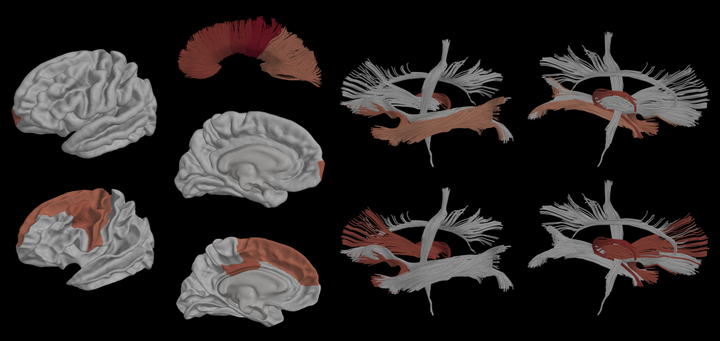Preliminary mapping of the structural effects of age in pediatric bipolar disorder with multimodal MR imaging

Abstract
This study investigates multimodal structural MR imaging biomarkers of development trajectories in pediatric bipolar disorder. T1-weighted and diffusion-weighted MR imaging was conducted to investigate cross-sectional group differences with age between typically developing controls (N = 26) and youths diagnosed with bipolar disorder (N = 26). Region-based analysis was used to examine cortical thickness of gray matter and diffusion tensor parameters in superficial white matter, and tractography-based analysis was used to examine deep white matter fiber bundles. Patients and controls showed significantly different maturation trajectories across brain areas; however, the magnitude of differences varied by region. The rate of cortical thinning with age was greater in patients than controls in the left frontal pole. While controls showed increasing fractional anisotropy (FA) and axial diffusivity (AD) with age, patients showed an opposite trend of decreasing FA and AD with age in fronto-temporal-striatal regions located in both superficial and deep white matter. The findings support fronto-temporal-striatal alterations in the developmental trajectories of youths diagnosed with bipolar disorder, and further, show the value of multimodal computational techniques in the assessment of neuropsychiatric disorders. These preliminary results warrant further investigation into longitudinal changes and the effects of treatment in the brain areas identified in this study.